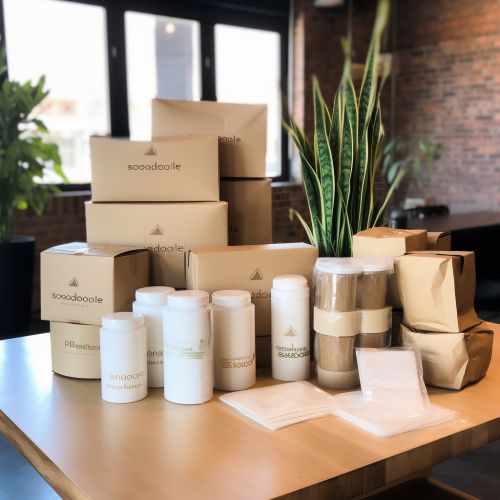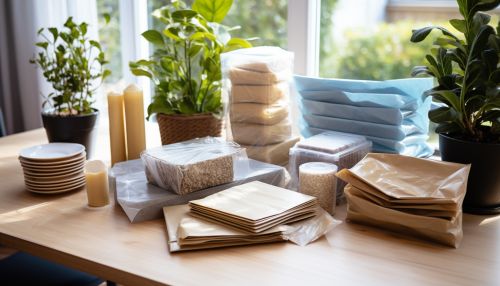Innovations in Biodegradable Packaging Materials
Introduction
Biodegradable packaging materials are a type of eco-friendly packaging that breaks down naturally into the environment. These materials are derived from renewable sources and can be composted at the end of their lifecycle. The use of biodegradable packaging materials is a significant step towards sustainable development and a circular economy. This article delves into the innovations in biodegradable packaging materials, exploring the latest advancements, their benefits, and challenges.


Types of Biodegradable Packaging Materials
Biodegradable packaging materials can be broadly categorized into three types: starch-based, polylactic acid (PLA), and polyhydroxyalkanoates (PHA).
Starch-based Packaging
Starch-based packaging is made from starch, a natural polymer. It is biodegradable and compostable, making it an eco-friendly alternative to conventional plastic packaging. Innovations in this area include the development of high-performance starch-based films and coatings.
Polylactic Acid (PLA) Packaging
Polylactic acid (PLA) is a biodegradable thermoplastic derived from renewable resources like corn starch or sugar cane. PLA packaging is known for its clarity and strength, making it suitable for a variety of applications. Recent innovations include the development of heat-resistant PLA and PLA blends.
Polyhydroxyalkanoates (PHA) Packaging
Polyhydroxyalkanoates (PHA) are a type of biopolymer produced by bacterial fermentation of sugar or lipids. PHA packaging is fully biodegradable and compostable. The latest advancements in PHA packaging include the development of high-performance PHA grades and PHA blends.
Innovations in Biodegradable Packaging Materials
Innovations in biodegradable packaging materials are driven by the need to reduce environmental impact, meet consumer demand for sustainable packaging, and comply with regulatory requirements.
Edible Packaging
One of the most innovative developments in biodegradable packaging is edible packaging. These are made from edible materials like seaweed, gelatin, and food particles. They are designed to be consumed along with the product or composted after use.
Active and Intelligent Packaging
Active and intelligent packaging is another innovative development in biodegradable packaging. Active packaging interacts with the product to extend its shelf life, while intelligent packaging provides information about the product's condition. Biodegradable materials used in these packaging systems include antimicrobial films and oxygen scavengers.
Nanotechnology in Packaging
Nanotechnology is being used to enhance the properties of biodegradable packaging materials. This includes the use of nanocomposites to improve the mechanical, barrier, and thermal properties of the packaging.
Benefits of Biodegradable Packaging Materials
Biodegradable packaging materials offer several benefits over conventional plastic packaging.
Environmental Benefits
The primary benefit of biodegradable packaging materials is their reduced environmental impact. They are derived from renewable resources, can be composted at the end of their lifecycle, and do not contribute to landfill waste.
Economic Benefits
Biodegradable packaging materials can also offer economic benefits. They can reduce the cost of waste management and disposal, and can also provide a competitive advantage in markets where consumers value sustainability.
Challenges in Biodegradable Packaging
Despite their benefits, there are also challenges in the use of biodegradable packaging materials.
Cost and Performance
Biodegradable packaging materials can be more expensive than conventional plastics. They may also have limitations in terms of performance, such as lower strength or barrier properties.
Infrastructure for Composting
The benefits of biodegradable packaging materials are maximized when they are composted at the end of their lifecycle. However, the infrastructure for industrial composting is not yet widely available.
Future Trends
The future of biodegradable packaging materials looks promising, with ongoing research and development aimed at improving their performance and reducing their cost. Future trends may include the development of new biodegradable materials, advancements in processing technologies, and increased use of biodegradable packaging in various sectors.
